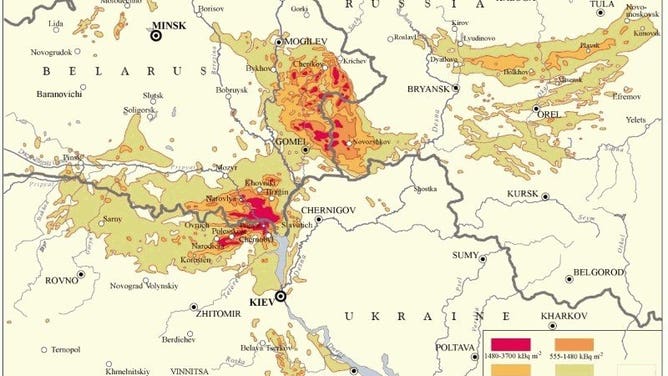Concern grows over Ukraine's nuclear sites after Russia seizes largest active power plant
Zaporizhzhia Power Plant now under Russian control
Energy experts from across the world are concerned with nuclear power sites in Ukraine as hostilities rage in the country that is home to the worst nuclear power plant accidents in world history.
The International Atomic Energy Agency (IAEA) says Ukraine has 15 nuclear reactors, making it one of the largest producers of nuclear energy in Europe.
Russian forces took control of the Zaporizhzhia Power Plant, Europe's largest nuclear power plant in Ukraine. According to the IAEA, the Russian military launched a projectile, causing a fire at a facility training building that was later put out.
"I’m extremely concerned about the situation at the Zaporizhzhia NPP and what happened there during the night. Firing shells in the area of a nuclear power plant violates the fundamental principle that the physical integrity of nuclear facilities must be maintained and kept safe at all time," IAEA Director General Rafael Mariano Grossi said.
Two people were injured, and there are still Ukrainian workers operating the plant.
Grossi said there had been no release of radioactive material, and only three of the six plant's reactor units are operating currently.
10 times worse than Chernobyl

Map of radionuclide deposition after Chernobyl.
(United Nations)
In an article posted in the Bulletin of the Atomic Scientists in 2015, Tatiana Kasperski stated that the country pursued nuclear energy as a policy to keep energy independent from Russia.
Because of the materials’ sensitive nature, the IAEA reports only 32 countries have nuclear power programs.
Experts say nuclear energy is created through reactions called fission. The heat created by the process turns water into steam, which spins a turbine to produce electricity.
It is a dangerous process where radioactive material must stay contained, or else vast areas could face dangers like what parts of Eastern Europe continue to experience since the Chernobyl disaster of 1986.
The IAEA said that over 100 radioactive elements were released into the atmosphere after one of Chernobyl’s reactors exploded.
Because of Ukraine’s location on the European continent and the prevailing winds, elements were spread across a large section of the globe.
The contaminants were so severe authorities established a Chernobyl Exclusion Zone around the now-closed reactors to keep humans away from the potential deadly interactions.
US COMPANY TRACKING POWER OUTAGES IN UKRAINE IN FIRST-OF-ITS-KIND WAR ZONE EFFORT
The threat of a similar disaster has experts worldwide concerned about the status of Ukraine’s nuclear production sites.
John Lee, a professor emeritus of Nuclear Engineering and Radiological Sciences at the University of Michigan, believes the containment structures should withstand a certain level of attack and hopes that plant operators take the necessary steps to terminate any ongoing nuclear reactions.
"I am indeed quite concerned about the security and safety of the Zaporizhzhia reactors as well as the Chernobyl site. I hope the International Atomic Energy Agency could take a proactive role in ensuring the safety of the nuclear facilities in Ukraine," Lee said.
Ukrainian leaders warned that any disruption to Zaporizhzhia, Europe’s largest active nuclear power plant, could result in a failure ten times larger than Chernobyl.
The IAEA Incident and Emergency Centre is in full response mode after Russian troops took over Zaporizhzhia.
The Associated Press reports Ukrainian President Volodymyr Zelenskyy has been in contact with President Joe Biden and other world leaders following this latest attack.
The U.S. Department of Energy has activated its Nuclear Incident Response Team and is monitoring the events with the Department of Defense and the U.S. Nuclear Regulatory Commission.